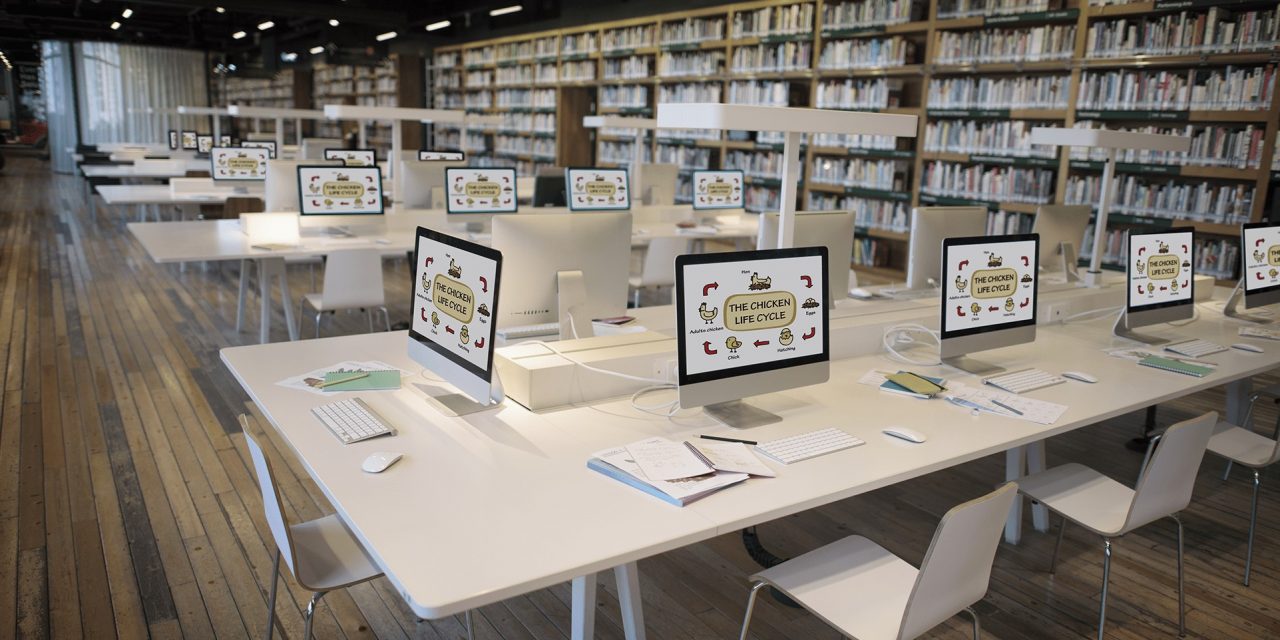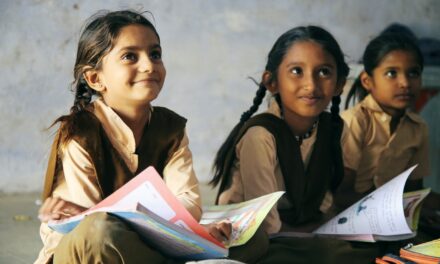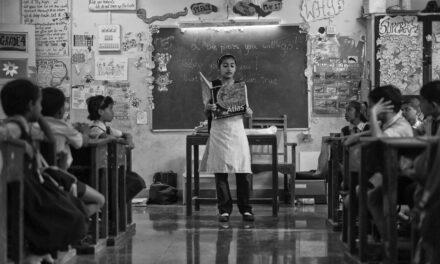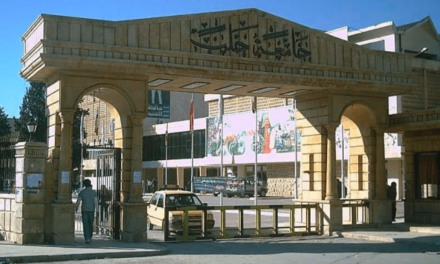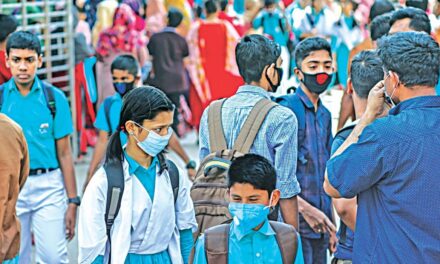This NORRAG Highlights, published on 2 September, is contributed by Mike Douse (Freelance International Educational Consultant) and Philip Uys (Adjunct Associate Professor of Education Systems at Charles Sturt University in Australia). The authors argue that the Digital Age Technology and Covid-19 has transformed the education systems and “The School” as we know it. Thus, education needs to be restructured with digitisation as the cohesive force to achieve its great potential.
Education is undergoing a fundamental transformation consequent upon the challenges and possibilities of the Digital Age and responding to the tangible/virtual duality of contemporary consciousness. The urgent actions consequent upon Covid-19 offer a short-cut into that transformed educational situation within which ‘The School’ as we know it will fade into history.
‘Getting our schools back to normal’ appears to be the worldwide aspiration, albeit acknowledging co-existence with the virus on a long-term basis. [Let it be recognised that this determination is often for economic rather than educational motives, as if schooling were but a combination of child-minding and life chance labelling.] The perception that school-children (unlike their teachers) are virtually immune is balanced by a realisation that Covid-19 may be passed through them to their families, including their vulnerable grandparents.
Moreover, while most (but not all) schools may apply high hygienic standards, the challenge of physical distancing (keeping learners two metres apart, as required by some but not all countries) appears insuperable: a typical six-classroom school that hitherto held 240 pupils may now accommodate but 48 in safety. And, even then, preventing six-years-olds (let alone teenagers) from close-contact mixing would be a perpetual tribulation, unless 30 protective bubbles led by teachers, assisted by assistants and supported by volunteer parents is an acceptable long-term solution.
But all of that vain effort is based upon a presupposition that the mission is to restore education to its pre-pandemic situation. Which is a false ambition. Getting 240 (let alone 2,400) learners, their teachers and the necessary others into a set of buildings for 5 x 7 hours weekly for two-thirds of the year neither viable nor vital. Prior to the novel coronavirus’s emergence, schools worldwide were already commencing their fundamental transformation, made necessary and possible by Digital Age technology. Responses to the coronavirus challenge need to be consistent with that underlying, permanent and more profound conversion, and not merely increasingly introducing random digital tools in learning and teaching.
Technologies are to be understood as “processes to be developed and not as tools to be applied [and] should be part of a renewed vision of the curriculum and of pedagogy” (Aguerrondo et al., 2014[i]). Similarly digital literacies are to be “…located as part of social practices and occur within culturally constructed instances or literacy events” (Bhatt, 2017[ii]) otherwise serious issues could become global pandemics such as vision problems, addiction to computer games, cyberstalking, and that “an increased knack for mental multitasking comes at the price of our ability to think deeply” (Carr, 2019[iii]).
Schools, as we know them, are a relatively recent phenomenon – industrial age artefacts (with ecclesiastical antecedents) – and we should “create a new blueprint for learning together”. In this contemporary world, characterised by connectivity, exemplified by immediacy and defined by self-determined information access, they are as outdated as are quill pens, buttoned boots and facsimile machines. The manner in which the transmission of information (and the terrifyingly glorious vastness of readily-available data out of which, skilfully, such information may be derived) and the sharing of ideas and the stimulation of creativity may be achieved, manifest a fresh socio-economic as well as educational era – a transition as epoch-shattering as that from feudalism to capitalism.
Education needs to be totally restructured with Digitisation as the cohesive force to achieve its potential and create previously unimagined synergies in line with Basu’s[iv] (1997) “multi-dimensional approach to training”, otherwise there will be frustrated expectations. We align with Alcoforado’s[v] (2019) call to restructure the education system in all countries of the world “as a consequence of the profound changes that are occurring in the world of work due to the technological advance, especially with the use of artificial intelligence in productive activities”.
The educational overhaul required is not that we simply need to digitise education as we “… are living in an age of rapid technological automation, heralding the technological overcoming of work as such” – a position we are critical of, as is Benanav (2019[vi]). An entire overhaul is called for, moving above AI and beyond ICT, embodying and synergistically integrating contemporary technology in its connectivity, organisation, curriculum content and research, and in innovation, learning methods and management. By no means what Bartlett (2018)[vii] calls “a post-human economy”– more, at least educationally, the Overcoming of Geography as opposed to the End of History.
The pre-primary and primary phases are, essentially, times of individual awakening – a few enjoyable and stimulating years of enabling each child to become ready for self-directed learning. Some children will be ready, academically and emotionally, to escape from external educational direction at the chronological age of 10 years (or even earlier); others may not be ready until well into their teens. When a particular pupil shrugs off the well-intentioned mentorship straightjacket and declares ‘I am now ready to take responsibility for my own learning!’ – it is then that self-directed education may and must begin.
From that (by definition ‘secondary’) phase onwards, it is necessary to recognise ‘The School’ not as a tangible location but as a dispersed (and ever more global) community of learners – a process of individually-driven teacher-buttressed self-fulfilment as opposed to a physical-located exercise in regimented enforcement. For now the learners ‘own’ the curriculum and the pedagogy is learning-supportive, seamlessly incorporating digital and traditional methodologies. Not only in these pandemic times but forever onwards, there need seldom be whole class group work. Weekly one-to-one face-to-face safe meetings with individual teachers and small group interactions as needed will be sufficient to supplement and sustain the predominantly online learning experience. This is already the world within which young learners live: let us recreate a universal education system around that reality.
Far from education being a preparation for the world of work, the only reason for working hard, for getting a well-paid job and for accumulating wealth is to be able to devote oneself to obtaining the best possible lifelong education. What young people – all people – should be helped to acquire is the facility of deciding what they want to learn, and to enjoy learning, in the present-day, evolving context.
So let us use these Covid-19 months (or maybe years, or even decades) imaginatively, positively and well. Let us conceive “inclusive and equitable quality education and lifelong learning” in terms of enjoyment and self-fulfillment [Question: which arrives first: post-pandemic normality or 2030?]. Let us create wondrous learning systems, techniques and materials responsive to individual learners’ well-informed requirements, embodying the entirety of our Age’s incredible possibilities. Let us collaborate to topple the demeaning power of PISA. And, above all, let us recognise that, just as nothing will ever be the same – economically and socially – post-Covid-19, so also will nothing – educationally – ever be the same again post-Digitisation.
About the Authors: Mike Douse has been involved in international education since 1964, having worked in and for over sixty countries for the EU, World Bank, AsDB, Unicef, email: MJDouse@gmail.com. Philip Uys is an Adjunct Associate Professor of Education Systems at Charles Sturt University in Australia, email: philip.uys@globe-online.com.
Contribute: The NORRAG Blog provides a platform for debate and ideas exchange for education stakeholders. Therefore, if you would like to contribute to the discussion by writing your own blog post please visit our dedicated contribute page for detailed instructions on how to submit.
Disclaimer: NORRAG’s blog offers a space for dialogue about issues, research and opinion on education and development. The views and factual claims made in NORRAG posts are the responsibility of their authors and are not necessarily representative of NORRAG’s opinion, policy or activities
[i] Aguerrondo, I. and Vaillant D. (2014). Learning Under the Magnifying Glass, Learning and Opportunities Series, UNESCO
[ii] Bhatt, I. (2017). Assignments as controversies: Digital literacy and writing in classroom practice. New York and London: Routledge. Cited in M. Brown (2017) A Critical Review of Frameworks for Digital Literacy: Beyond the Flashy, Flimsy and Faddish: ASCILITE TELall Blog posted in three parts in October 2017
[iii] Carr, E.H. (2011) Delivering Development: Globalisation’s Shoreline and the Road to a Sustainable Future, London: Palgrave Macmillan.
[iv] Basu, C. K. (1997) Challenges of Current Social, Economical and Technological Developments and Need for Reforms/Renovations in Training of Teachers in Technical-Vocational Education. A Discussion Paper presented at the UNEVOC/UNESCO International Round Table on Training of Teachers/Trainers in Technical and Vocational Education Curitiba, Brazil.
[v] Alcoforado, F. (2019) The Future of Work and Education in the World: article published in English on the Academia.edu website
[vi] Benanav, A. (2019) Automation and the Future of Work 1, New Left Review, II/119 September/October 2019, pp. 5-38, London.
[vii] Bartlett J. (2018). The People versus Tech: How the Internet is Killing Democracy, London, Ebury Press.

